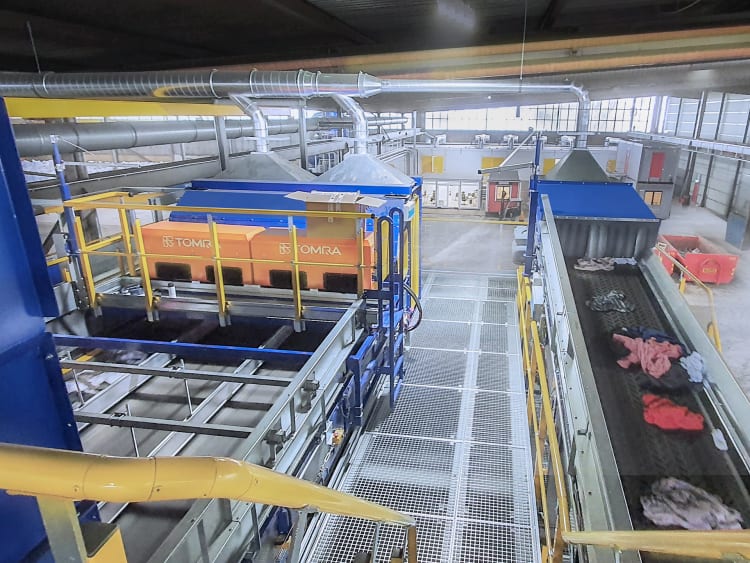Automated sorting: the path to a textile circular economy
Stadlet – a leading supplier of sorting plants for the recycling industry – is researching automated sensor-based solutions for textile sorting. In 2017, in partnership with Tomra, it has designed and built a small pilot project plant in Avesta, Sweden, in the second phase of the government-funded Swedish Innovation Platform for Textile Sorting (SIPTex) project, which aims to develop a sorting solution tailored to the needs of textile recyclers and the garment industry. This was followed in 2020 with the third phase of the project: the first industrial-scale fully automated mixed textile waste plant in the world, which is capable of achieving the purity and recovery required for recycling and reutilization.
This facility, located in Malmö, processes pre-consumer waste from textile producers (clippings and rejects) and post-consumer waste, which consists of clothing and household textiles, and may contain non-textile parts such as buttons and zippers. The material is delivered in bales weighting from 350 to 500 kg and is sorted whole. The plant has the capacity to process up to 4.5 tonnes/hour in one line.

The textile sorting process
The process developed by Stadler with the cooperation of Tomra in the SIPTex project starts with the waste textiles entering the plant in batches, dosed, fed by conveyor belts into four sensor-based Tomra Autosort units.
“Because of the nature of the textile material fed into the plant, the feeding system and dosing are very important to the success of the sorting process,” explains Dr. Bastian Küppers, Engineer for Digital Business Development at Stadler. “The Stadler dosing drum features mechanical components specially designed to handle the soft, flexible textile materials, of various shapes and unpredictable s, prone to tangling. Similarly, the design and layout of the conveyor belts, hoppers and chutes need to be designed to avoid tangling of long pieces of fabric.”
The Tomra NIR (Near Infrared) sorting technology is also key to the process and capable of recognizing and differentiating various types of textiles in a first step. A second optical sorter is added for further cleaning of impurities.

Towards a textile circular economy
As the textile industry is moving towards a circular economy, driven by public opinion and legislation, the demand for textile sorting equipment is set to grow at an accelerated pace. Stadler has already seen an increase in interest for textile sorting plants and has been approached by companies in the recycling sector. “At Stadler we are seeing many interested parties who would like to visit the textile sorting plant we designed and built in Malmö,” comments Annika Ludes.Stadler is uniquely well placed to meet this new demand, bringing to the table its extensive know-how in the design and construction of sorting plants and the specific experience it has acquired through the SIPTex project, as well as the expertise of its technological partners such as Tomra. With its holistic approach, it is able to develop complete solutions tailored to the requirements of the individual customers.
Sources:
1. Boucher, J.; Friot, D. Primary microplastics in the oceans: A global evaluation of sources. IUCN International Union for Conservation of Nature, 2017 / Büks, F.; Kaupenjohann, M. Global concentrations of microplastics in soils – a review SOIL Band:6; H. 2, S. 649–662; 2020
2. Macklin, Malorie: 5 Ways Plastic Pollution Impacts Animals on Land
3. Center for Biological Diversity; Ocean plastics pollution – A global tragedy for our oceans and sea life
4. EU strategy for sustainable textiles


